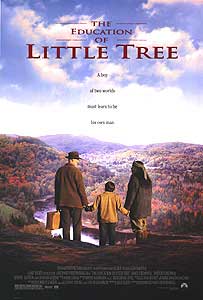To me these new stereotypes shows us that the myth-making machine has learned new and deadly tricks, much like the cyborg in Terminator 2. The ultimate result--the continued trivialization and appropriation of Indian culture--the absolute refusal to deal with us as just plain folks living in the present and not the past--is the same as ever. That's why challenging negative images and questioning who owns or produces these images are no substitute for a more all-sided oppositional effort. What's needed is a popular movement that could bring about meaningful change in the daily lives of Indian people.


3 comments:
I haven't seen any evidence that members of AIM "seek to rid Native peoples of their original languages, their original cultures, and their original existences." Why don't you show us the evidence?
Your story may not be stereotypical, but how about your views on Apocalypto? Your fantasies match Mel Gibson's fantasies, which means you're both thinking stereotypically.
A school principal espousing AIM's alleged principles isn't the same as AIM itself espousing them. Show me AIM's self-professed views in writing and then I'll consider them.
I already addressed the issue of seeing Apocalypto. Feel free to read my comments and respond to them. But I'll give you the short version again.
Do you also think I need to see Mt. Rushmore, Foxwoods Casino, or President Bush before I can comment on them? No, of course. The very idea is ridiculous.
I've written 400+ articles on a variety of topics, many of which I didn't see or experience personally. How did I manage it? It's called research, friend, and every good writer knows how to do it.
I'm not telling you my views on Apocalypto. I'm reporting the views of the movie critics and historical experts who say it's stereotypical. You can't or won't address these views so you keep trying to change the subject.
Repeat: The critics say Apocalypto is stereotypical. Do you agree or disagree? If you disagree, where's your evidence that the movie is historically accurate rather than stereotypically inaccurate?
You haven't said anything to contradict my point above: that you're an Indian who likes Indian stereotypes. You like Mel Gibson's stereotypes of the Maya as bloodthirsty savages, at least.
Post a Comment